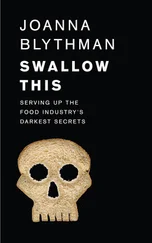If two compartments already seem old hat, then bored children can be further tempted by that little fromage frais that comes with its own toy or handy little spoon. Worried about the environmental impact of all this moulded plastic? Then plump for that reusable container which can be broken down and then remodelled into a constructable toy.
Finding those rolls and sandwiches coming home uneaten in the lunch box? Why not give the kids a miniaturized box so that they can have the fun of assembling their own lunch, sandwiching processed ham and cheese with salty crackers as perfectly as any dovetail joint?
Cheese getting the thumbs-down? What about letting them make their own self-service selection of pick ’n’ mix miniaturised cheeses or trying them out with a runny cheese and dipping biscuits ensemble?
All right, no one these days seriously expects children to eat a bit of whole fish anyway, but what do you do if they begin to reject even fish fingers? Try out fishy shapes with special tails for them to hold as they dip them into that essential ketchup, of course. Dinosaur-shaped Kievs, reconstituted potato with cute little arms and legs or funny faces, condensed milk, fromage frais or yogurt drinks in squeezy tubes to suck at playtime, triangular milk shakes, mini cup cakes topped with a rice-paper image of their favourite cuddly character … so continues the litany of food products targeted at children.
You have to give these products credit for being both ingenious and inventive – as far as food manufacturers are concerned, that is. This endlessly novel repertoire of ‘children’s’ specialities allows them to take heavily processed junk food, gift-wrap it in images guaranteed to appeal to children, then sell it at a tidy profit.
There’s a limit, of course, to how much they can charge for a basic frozen potato shape, fish finger, fromage frais or processed cheese. But once they have succeeded in packaging it for children they can simply sit back and listen to those cash registers ringing. There’s nothing wrong with profits, of course, and manufacturers insist that they are only giving parents a helping hand. What despairing parent with an infamous ‘picky child’ would not be prepared to pay that little premium if these products get him or her to eat something he or she would not otherwise? But the price parents and children pay is quite high if we consider the quality of the food on offer. Real potatoes don’t have arms and legs – to give them these, they need to be moulded together with chemical additives. Cheese doesn’t squirt naturally – a range of chemical emulsifiers and cheap dairy by-products needs to be incorporated first. It seems that the food industry has ordained that all those yogurts and fromage frais prominently featuring images of the latest desirable ‘collectable’ just have to have chemical preservatives and flavourings. In order to process that ham into its easy-to-handle shape, it has to have lots of added water, polyphosphates and the standard flavour enhancers. Not to put too fine a point on it, if we wanted to home in on products stiff with chemical additives, then we need look no further than these gimmicky offerings.
Most of us know that when we buy these children’s novelties we are paying over the odds for something that isn’t that healthy. But we feel desperate. Better they eat something than nothing, we think. And as far back as any of us can remember, there’s been a deep-seated belief that by taking basic ingredients and repackaging them in forms that appeal to children, we can get them to eat what they might otherwise reject.
But is presentation really the best long-term tool to get children to eat? Does every food we offer them have to be disguised with amusing little ears or sugary sprinkles? If you have your doubts and would rather your children ate real food, not gift-wrapped junk, then turn to pages 86–90, Presentation, Boredom and the ‘Yuck’ Reaction, for ideas.
GOODBYE DINNER LADY, HELLO CASH CAFETERIA
From time to time we hear about a school that serves healthy lunches to its children, or another that has taken the huge step of banning sweets and crisps as snacks at break, asking pupils to bring fruit instead. Such schools generate media attention because they are so rare. The overwhelming bulk of food on offer from school catering services is over-processed, low-grade stuff from which it is almost impossible to make a wholesome selection even supposing you were an adult nutritionist, let alone a confused seven-year-old, trying to see through the queue ahead, all the time concentrating on holding your tray and not dropping your money.
Traditionally school meals have never been gastronomic experiences, but at least in the past each school employed its own cook and a good part of the food was real and unprocessed, however limited in range. Water was the standard drink. Nowadays the dinner ladies and cooks of the past have mainly been made redundant and the dinner hall has been replaced with a vastly reduced staff operating the ‘cash cafeteria’. Their task consists of reheating or assembling a specified number of portions of ready-prepared items, targeted at what the food industry euphemistically calls ‘young consumers’, for which a more candid description might be ‘consumers of junk’.
This is a consequence of the 1980 abolition of any nutritional standards for school meals and the introduction of a policy called ‘Compulsory Competitive Tendering’ (CCT), which was widely implemented in the 1980s. It obliged local authorities to choose the most ‘competitive’ (for which read cheap) catering on offer. In-house, labour-intensive school meals were widely axed in favour of cheaper, large-scale outside catering operations. Those that were retained had to match the lowest commercial tender.
Later in the 1980s, cuts in entitlement to free school meals reinforced the damage done by CCT. Fewer children qualified for free meals and this reduced the total demand. Less uptake means fewer economies of scale and makes it even harder to provide wholesome meals on a low budget. While in 1979 some 64 per cent of children ate school meals, by 1996 that figure had dropped to 43 per cent.
The end result is that there is basically no real cooking going on in the vast majority of schools. On the hot front, bought-in, ready-prepared Kievs, pizzas, even baked potatoes are simply reheated. Burgers and sausages are cooked briefly. Everything is ‘portion-controlled’ to eliminate waste and must consist of a single or small number of units of food which can be stored for some time, preferably frozen. Even the apparently healthy and wholesome option of soup is characteristically straight out of the packet – just add water.
In certain areas, local authorities are trying to make school meals more profitable by converting cafeterias into ‘food courts’ which ape fast-food chains. The usual burgers, pizzas and fizzy drinks are served from US-style food counters with illuminated displays of the food on offer – just like high-street chains – by staff wearing baseball caps. These ‘initiatives’ are sponsored by manufacturers of junk food and fizzy drinks whose corporate logos are emblazoned over the eating area, on polystyrene plates and cups and on staff uniforms. This trend means that children get no respite from junk-food advertising even at school.
Other schools now have no hot food whatsoever, a consequence of further local authority budget cuts. They tend to serve only the very worst sort of mass-produced sandwich which even makes its petrol-station forecourt equivalent seem gourmet. Many schools have been told to offer salads because nutritionists advocate these as a healthy choice. Once again, a child will be lucky to see a simple sliced tomato, cucumber disc, carrot baton or lettuce leaf. Instead, it’s plastic tubs filled with bought-in offerings, conspicuously short on vegetables and instead loaded up with starchy, stodgy offerings of rice, corn, pasta, pulses or egg, all slathered in commercial dressings.
Читать дальше











